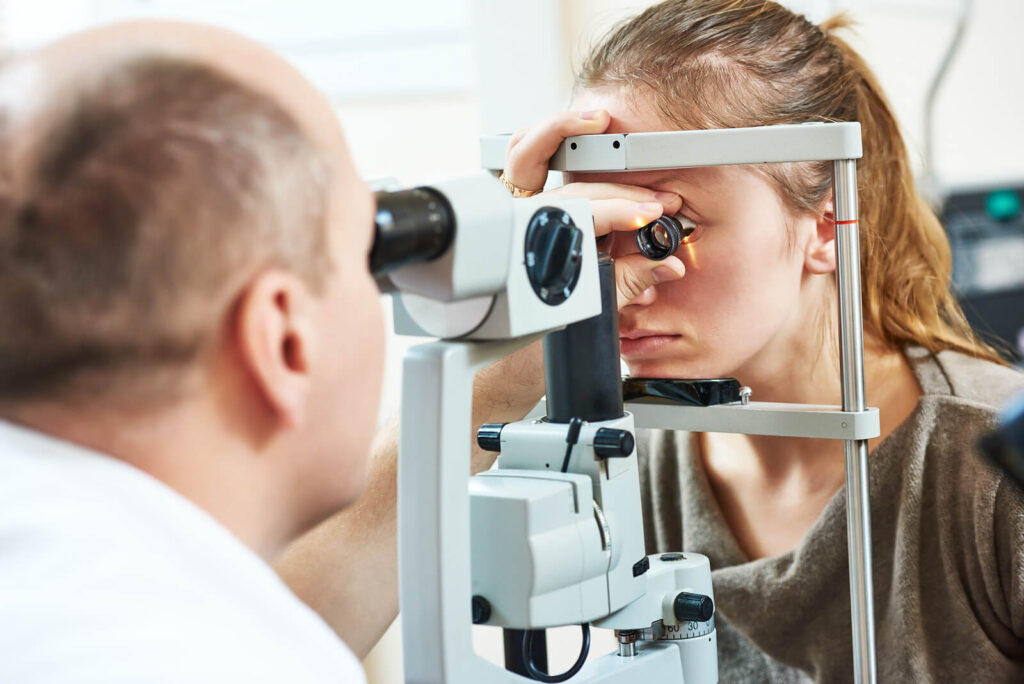
Introduction:
Regular eye exams are essential for maintaining optimal vision and overall eye health. However, determining the frequency of these visits can be a common question among individuals seeking to prioritize their ocular well-being. In this article, we will explore the importance of regular eye exams and provide guidelines on how often you should visit the eye doctor Calgary based on different age groups, risk factors, and overall eye health.
1. Infancy and Early Childhood:
Eye health begins at birth, and early detection of any vision problems is crucial for a child’s development. The American Optometric Association (AOA) recommends that infants have their first comprehensive eye examination between 6 and 12 months of age. Further evaluations should be conducted at the ages of 3 and 5 to ensure healthy vision and detect any potential issues early on. These early assessments allow for timely intervention in cases of amblyopia (lazy eye), strabismus (misaligned eyes), or refractive errors, ensuring proper vision development.
2. School-Aged Children and Adolescents:
Once children enter school, routine eye exams become vital to monitor their visual health. The AOA recommends that children undergo comprehensive eye examinations every two years if no vision correction is required. However, if a child wears glasses or contact lenses, yearly visits are advised to ensure that prescriptions are up to date and visual needs are met. Regular eye exams during these formative years can identify and address vision problems that may impact academic performance, such as myopia (nearsightedness), astigmatism, or convergence insufficiency.
3. Adults (18-60 Years):
For adults aged 18 to 60 years with no significant vision problems or risk factors, it is generally recommended to have a comprehensive eye examination every two years. These regular exams provide an opportunity to detect any changes in vision, monitor eye health, and identify early signs of conditions such as glaucoma, cataracts, or macular degeneration. However, certain individuals may require more frequent visits based on specific risk factors or medical conditions.
4. Older Adults (60+ Years):
As individuals age, the risk of developing age-related eye conditions increases. For adults aged 60 and above, the AOA advises annual comprehensive eye exams to closely monitor vision changes and identify age-related conditions in their early stages. Common eye conditions such as cataracts, glaucoma, and age-related macular degeneration can be detected and managed more effectively with regular visits. Additionally, older adults with systemic health conditions such as diabetes or hypertension should have regular eye exams to evaluate the impact of these conditions on their eyes.
5. Risk Factors and Individual Circumstances:
In addition to age, several risk factors may necessitate more frequent visits to the eye doctor. Individuals with a family history of eye conditions, such as glaucoma or macular degeneration, should consider more regular eye exams to monitor their own eye health. Those with existing eye conditions or a history of eye injuries should follow the recommended schedule provided by their eye care professional, which may involve more frequent visits. Furthermore, individuals experiencing sudden changes in vision, eye discomfort, or other concerning symptoms should seek immediate attention from an optometrist.
Conclusion:
Regular eye exams are a crucial component of maintaining good eye health and preserving optimal vision throughout life. While guidelines can provide a general framework, it is important to consult with your eye care professional to determine the frequency of visits based on your individual circumstances, risk factors, and overall eye health. By adhering to a regular schedule of eye exams, you can ensure early detection of vision problems, timely intervention for any ocular conditions, and proactive management of eye health. Remember, prioritizing your eye care is an investment in your vision and overall well-being.





